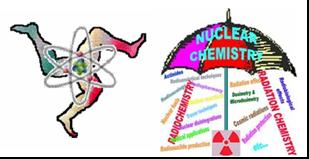Speaker
Deborah Favaro
(Instituto de Pesquisas Energeticas e Nucleares)
Description
Nuclear Chemistry appears very little in high school course curricula or classes in Brazil. This fact hinders students who enroll in higher education without the knowledge necessary for it to exert its full citizenship. This study investigated the public University of São Paulo student´s of understanding of the term "nuclear energy", highlighting the structure of Social Representations (SR). The methodology used was the evocations free from words technique by using the EVOC program, given the frequency in which each element was raised and their average order of evocation to an issue-oriented semantic (cognitive). In this study 124 students were interviewed: from the Chemistry, Pharmacy, Environmental Chemistry, Chemical Engineering and Nutrition Departments (62), Oceanographic Department (29) and Economics, Business Administration and Accounting Department (33). The results indicated that the social representation structure concerning nuclear issues has as its central cognitive element represented by the terms atomic bomb, fission, fusion and radiation. Affective aspects are represented by the terms fear, doubt, worry and curiosity. It was observed that there is a need for educational efforts, and a revision of the educational practices in high school regards to Nuclear Chemistry. The concepts of chemistry and its social factors should be treated in a concrete form in order to demystify erroneous concepts. Reading and educational instruments should be provided to ensure a better understanding of radioactivity phenomena and their applications.
Author
Luciana Farias
(Universidade Federal de São Paulo, UNIFESP, BRAZIL)
Co-author
Deborah Favaro
(Instituto de Pesquisas Energeticas e Nucleares)
